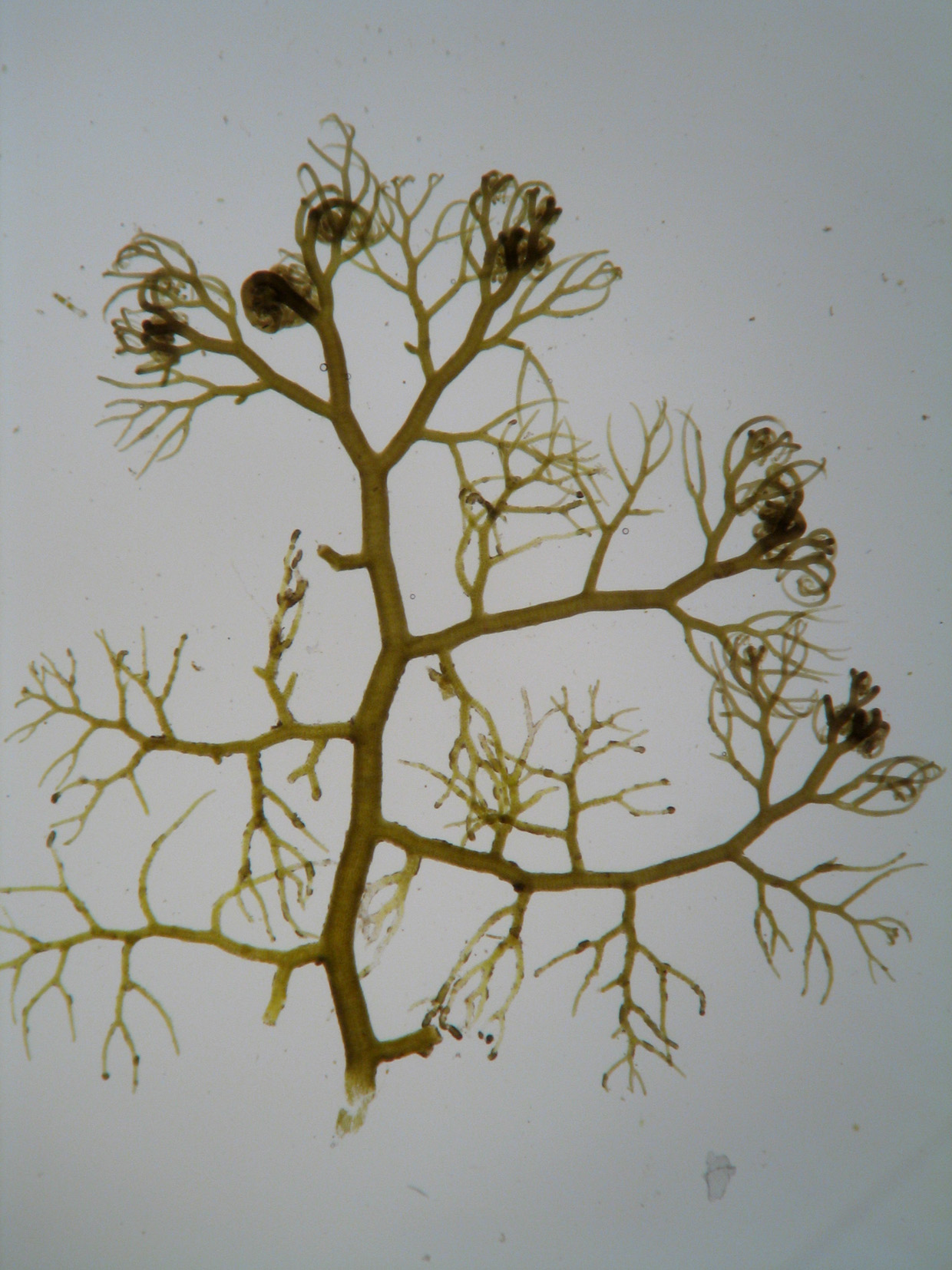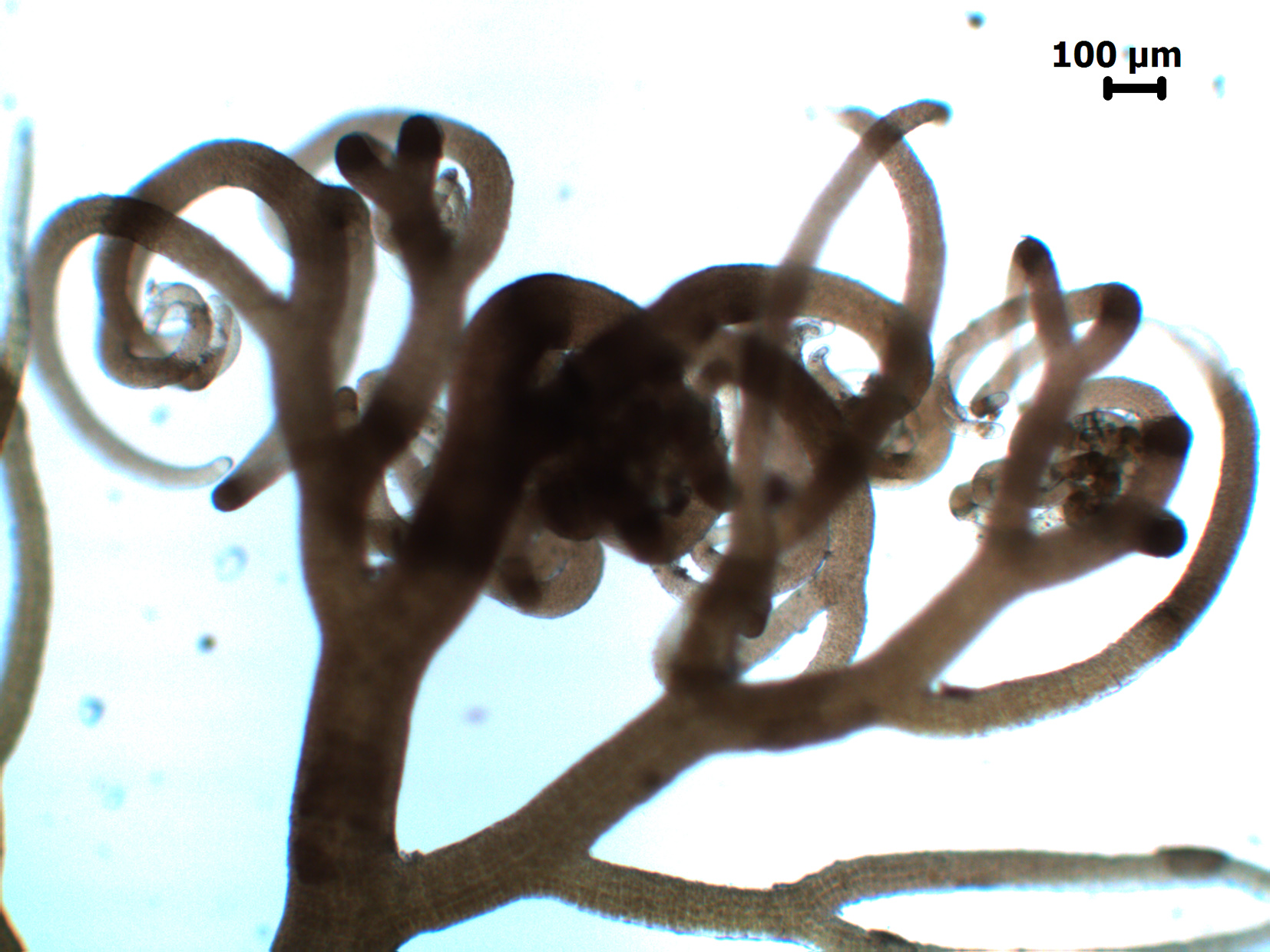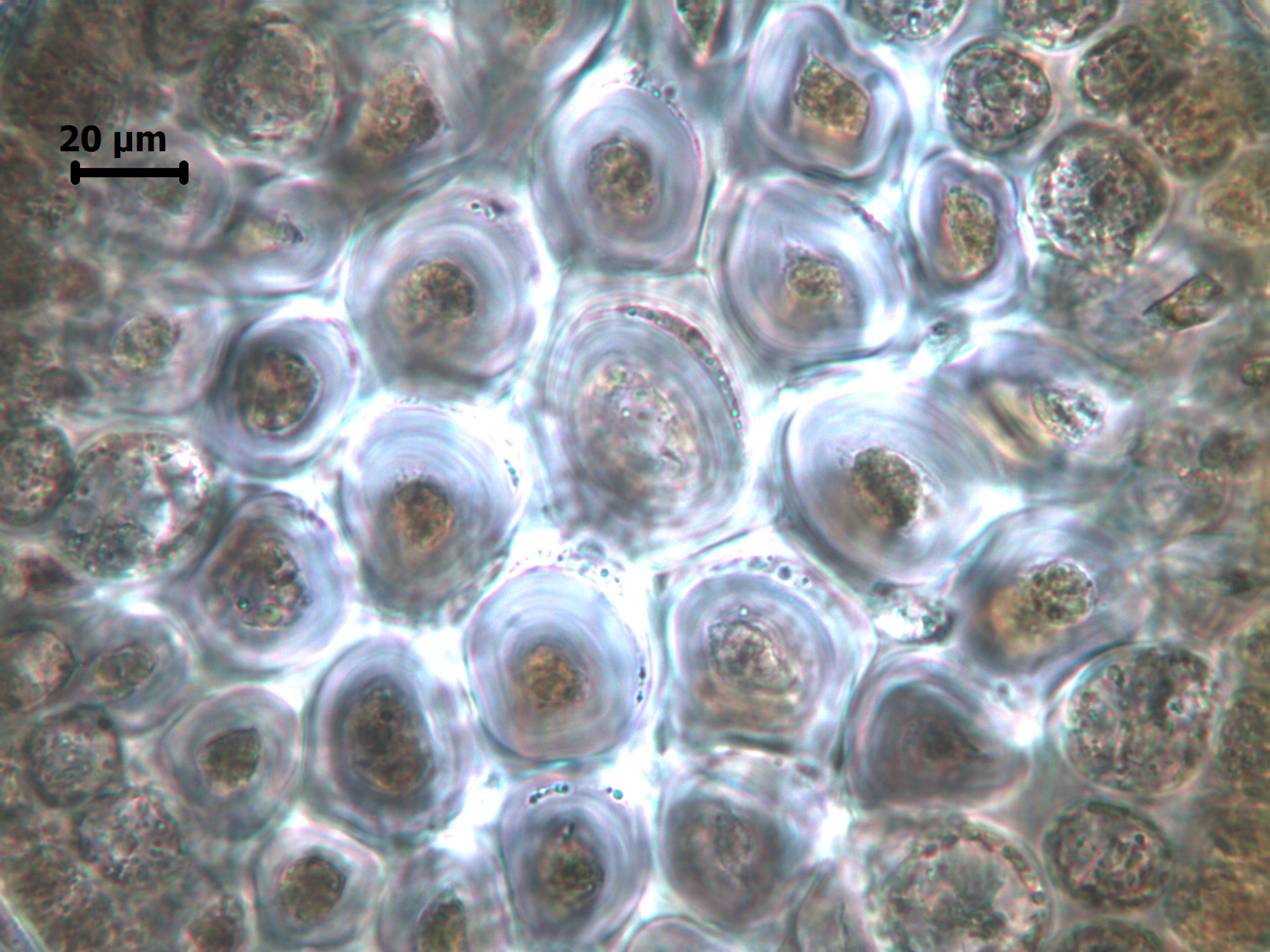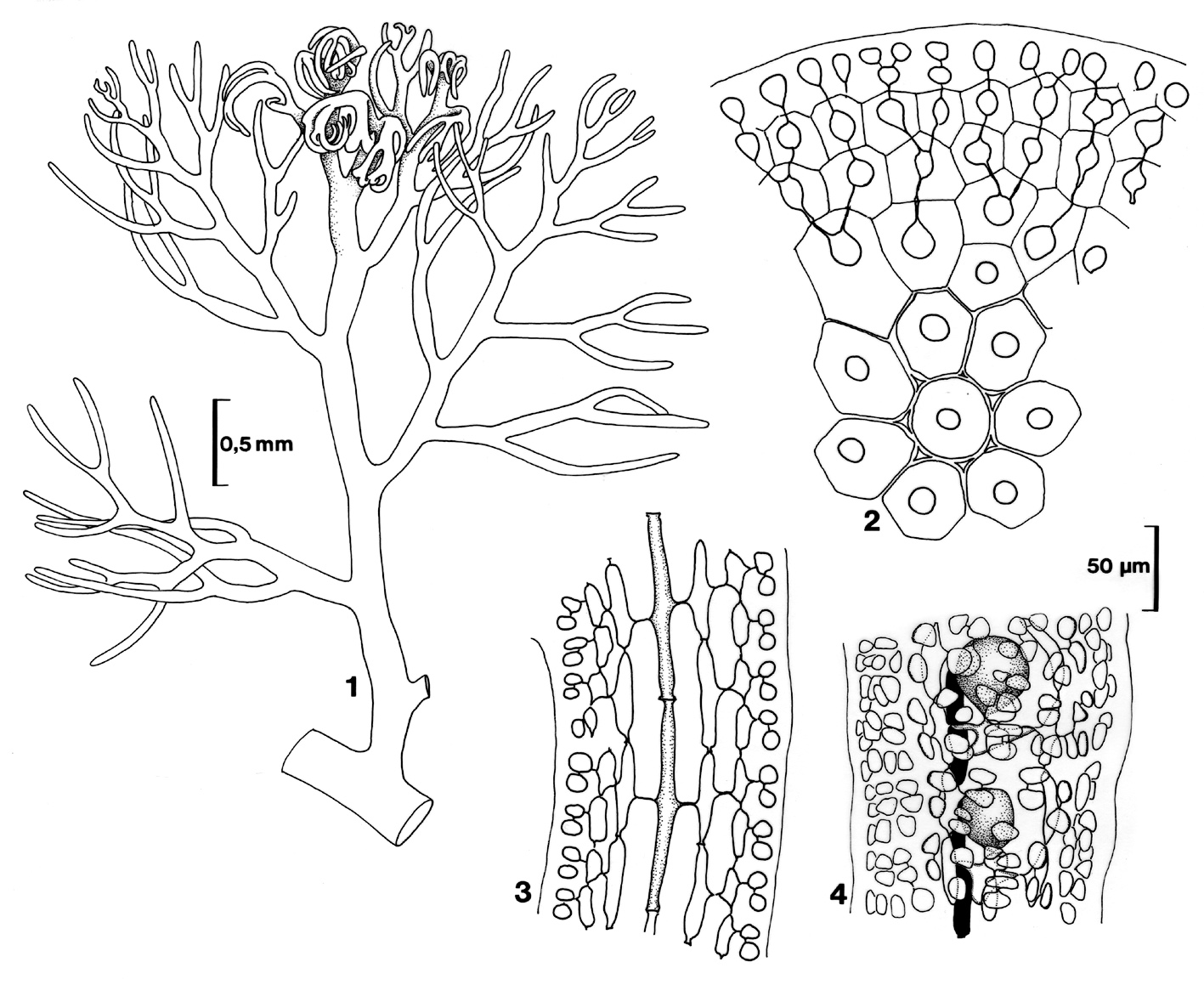Seaweeds of the South African South Coast


Order Ceramiales
Family Rhodomelaceae
Bostrychia harveyi Montagne 1852: 317
Plants blackish-brown, forming creeping clumps up to a few cm in diameter, attached to stalks of estuarine higher plants. Apices strongly incurved; axes polysiphonous and corticated throughout, segments with 5-7 pericentral cells and well-developed cortication in up to 5 (-7) concentric layers, with the number of vertical tiers of cortical cells approximately doubling in each layer towards the periphery. Main axes about 600 µm in diameter. Branching alternate, laterals arising about every third segment, several times re-branched, complanate.
Tetrasporangial stichidia terminal on ultimate branchlets, conical or spindle-shaped, ca 1500 x 250 µm. Tetrasporangia 1-4 per segment, ca. 100 µm in diameter, other pericentral cells remaining sterile. Tetrasporiferous pericentral cells with three groups of cover cells: a small central and two larger lateral groups. Sexual structures not seen.
Collections, ecology and regional distribution
Recorded from Langebaan Lagoon on the west coast, and on the south coast from several estuaries between Knysna and Mntafufu in Transkei (13, 29-47) (as B. scorpioides – see note below). This is the largest of South African Bostrychia species, found on higher plants in the upper part of the littoral zone in some estuaries and mangroves.
World distribution: Chile, New Zealand, Tasmania and Victoria, Australia (Guiry & Guiry, 2010).
Type locality: Corral, Valdivia Province, Chile (Silva et al. 1996).
Note: Some authors, including Seagrief (1984), Lambert et al. (1987) and Stegenga et al. (1997), followed Post (1936) in referring this entity in South Africa to B. scorpioides. However, we follow Silva et al. (1996) in applying the name B. harveyi to this Southern Hemisphere entity, for reasons of both morphology (King & Puttock 1989) and molecular phylogeny (Zuccarello & West 2006).

Bostrychia harveyi, fresh material, Knysna Estuary (under dissecting microscope).

Bostrychia harveyi, apices of fresh material, Knysna Estuary (under compound microscope).

Bostrychia harveyi, cross section showing axial and seven pericentral cells surrounded by cortication.

Bostrychia harveyi. 1. Thallus apex, showing incurved tips. 2. Cross section of main axis. 3. Longitudinal section of young branch. 4. Tetrasporangial segments, immature. Reproduced from Stegenga et al. (1997), where it is cited as B. scorpioides.
References Bostrychia harveyi
Guiry, M.D. & Guiry, G.M. 2010. AlgaeBase. World-wide electronic publication, National University of Ireland, Galway. http://www.algaebase.org; searched October 2010.
King, R.J. & C. Puttock. 1989. Morphology and taxonomy of Bostrychia and Stictosiphonia (Rhodomelaceae/Rhodophyta). Australian Systematic Botany 2: 1-73.
Lambert, G., T.D. Steinke & Y. Naidoo. 1987. Algae associated with mangroves in southern African estuaries. I. Rhodophyceae. South African Journal of Botany 53(5): 349-361.
Montagne, C. 1852. Diagnoses phycologicae, seu quibus characteribus, discriminandae sunt species lichenum algarumque nonnullae novae, in tomo Florae chilensis octavo nondum typis mandato descriptae. Annales des Sciences Naturelles, Botanique, sér. 3 18: 302-319.
Post, E. 1936. Systematische und pflanzengeographische Notizen zur Bostrychia-Caloglossa Assoziation. Revue Algologie 9: 1-84.
Seagrief, S.C. 1984. A catalogue of South African green, brown and red marine algae. Memoirs of the Botanical Survey of South Africa 47: 1-72.
Silva, P.C., Basson, P.W. & Moe, R.L. 1996. Catalogue of the benthic marine algae of the Indian Ocean. University of California Publications in Botany 79: 1-1259.
Stegenga, H., Bolton, J.J. & R. J. Anderson. 1997. Seaweeds of the South African west coast. Contributions from the Bolus Herbarium 18: 655 pp.
Zuccarello, G.C. & West, J.A. 2006. Molecular phylogeny of the subfamily Bostrychioideae (Ceramiales, Rhodophyta):subsuming Stictosiphonia and highlighting polyphyly in species of Bostrychia. Phycologia 45: 24-36.
Cite this record as:
Anderson RJ, Stegenga H, Bolton JJ. 2016. Seaweeds of the South African South Coast.
World Wide Web electronic publication, University of Cape Town, http://southafrseaweeds.uct.ac.za; Accessed on 07 January 2026.